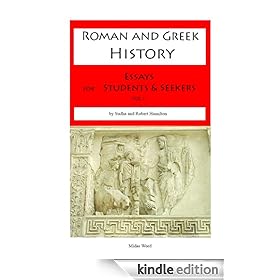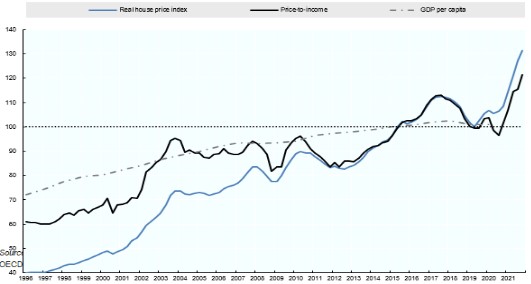by Robert Hamilton
In this essay, I will be critically assessing the argument, put forward by Robert Di Vito in his published article, “Old Testament Anthropology and the Construction of Personal Identity,” that Lot’s contentious offering of his daughters to a ‘mob’ of men in Genesis 19 is an example of a ‘value system’, which ranks the family group above any individual rights. Di Vito’s argument rests, intrinsically, on the difference between our modern sensibilities and that of the characters who inhabit the Old Testament Hebrew Bible. How are we so different from these denizens of the Bronze Age?
De Vito, references Charles Taylor’s, Sources of the Self, to outline the development of the “self” from the Enlightenment, in the late seventeenth century, as a pivotal shift from how we considered ourselves and our place in the universe previously.[1]
“Essentially, the development which Taylor charts extends from Augustine through Descartes, Locke, and Kant on into the romantics, culminating in the affirmation of the human subject as an autonomous, disengaged, self-sufficient, and self-responsible unity, one whose own “inner depths” are the sufficient ground of its efforts at self-expression and self-exploration.”[2]
This sense of “self,” which all of us hold so dearly today, was in De Vito’s view, absent, or hardly developed, during the time of the Hebrew Bible. In contrast to our sense of “individuality,” which we, as modern people, value highly, the members of Old Testament family groups were defined by their kinship to a patriarchal family leader (“father”), and to a lesser extent, their tribe. The narrative within the Hebrew Bible confirms this, through its focus on these characters, like Abraham, Noah and Moses, to name a few. Martin Noth describes this focus, within the Pentateuch, as the “circle of patriarchs”.[3] In Genesis 12:26 the story revolves around Abraham, with Lot, his nephew, making a peripheral appearance in Genesis 19, mainly because of his relationship within Abraham’s family circle. Individuals within family groups, and or tribes, had no personal value outside of the family.[4] The crux of De Vito’s argument is, that identity was defined very differently in the time of the Old Testament, in comparison to how we define it today.
Wives, sons and daughters, within the stories of the Hebrew Bible, are there to carry out their “father’s” wishes in everything. De Vito, emphasises this “unequivocal patriarchy” within the ancient Israelite family group and makes it clear that all property was owned by the “father” and that his children, grand children, and so on, were his property.[5] So, that, when Lot, in Genesis 19, offers his virginal daughters, to be raped by a mob of men as an alternative to Jehovah’s male angels, or messengers, being sodomised by these same men, it may not be, as morally contentious in the same way, as we view it today.[6] In fact biblical scholars, like Desmond Alexander, see the Genesis 19 story as proof of Lot’s righteousness, in the same way that Abraham’s righteousness is portrayed in Genesis 22.[7] Paul Tonson in his article, “Mercy Without Covenant,” sees Lot, as performing his more important duties, as host, rather than his less important parental obligation.[8] It is, however, pretty repugnant behaviour whatever way you look at it and devalues both the role of women and the duty of care a father has to his children. In the words of Lyn Bechtel, “his offer violates the assumption of protection of women as the producers of life that characterizes ancient society.”[9] Scott Morschauser, in his article, “Hospitality, Hostilities and Hostages,” disagrees completely with the traditional interpretation of the Hebrew in Genesis 19: 1-9 – he reads the meaning of the words to refer to Lot, as a judicial patriarch interviewing the messengers at the gatehouse, during a time of war, and then being challenged by the mob to hand over the two men as possible spies.[10] He goes further, to completely discount any sexual meaning in regard to the men, or Lot’s daughters – if this is correct then it greatly undermines the common understanding of Genesis 19.
De Vito, in his essay, goes on, to argue that this patriarchal family grouping system provided social stability and that in early Israel this was how villages were constructed, with several “father’s houses” forming a clan based grouping.[11] De Vito stresses, that it is the social roles determined by the family group, which define the identity of the members of the Old Testament families. Morality is centred within a community model, which is founded on an extended family group, with one patriarchal leader responsible for all moral decisions affecting the family – the “extended lineal group.”[12]
Surrounding this kernel of truth, according to De Vito, the article presents some very interesting analysis of contemporary attitudes towards identity, in contrast to historical antecedents. The article, begins with a comparison of, the ancient Greek’s idea of the duality of body and soul, with the Israelite’s literal conception of a united single self. The author, importantly, qualifies the difference between today’s sense of self with the more primitive, Old Testament, conception of self. De Vito states,
“Just as the promotion in modernity of a socially disengaged self contrasts sharply with the embedding of the Israelite in the family, so too the modern conviction of personal unity finds only a distant echo in the biblical construction of individual identity.”
The essential points here, are the “social disengagement” of the modern self, away from identifying solely with roles defined by the family group, and the development of a “personal unity” within the individual. Morally speaking, we are no longer empty vessels to be filled up by some god, or servant of god, we are now responsible for our own actions, and decisions, in light of our own moral compass. I would like to mention Julian Jayne’s seminal work, The Origin of Consciousness in the Breakdown of the Bicameral Mind, as a pertinent hypothesis for an attempt to understand the enormous distance between the modern sense of self with that of the ancient mind, and its largely absent subjective state.[13]
“The preposterous hypothesis we have come to in the previous chapter is that at one time human nature was split in two, an executive part called a god, and a follower part called a man.”[14]
This hypothesis sits very well with De Vitos’ description of the permeable personal identity of Old Testament characters, who are “taken over,” or possessed, by Yahweh.[15] The evidence of the Old Testament stories points in this direction, where we have patriarchal family leaders, like Abraham and Noah, going around making morally contentious decisions (in today’s terms) based on their internal dialogue with a god – Jehovah.[16] As Jaynes postulates later in his book, today we would call this behaviour schizophrenia. De Vito, later in the article, confirms, that:
“Of course, this relative disregard for autonomy in no way limits one’s responsibility for conduct–not even when Yhwh has given “statutes that were not good” in order to destroy Israel “(Ezek 20:25-26).[17]
This brings us to De Vito’s next sub-heading, within the article, Heteronomy – the opposite of autonomy – and the fact that the Old Testament Israelites were clearly told to obey and definitely not to think for themselves:
“Wisdom comes not to those who look within themselves for worlds to explore, or who embark on roads never travelled, but only to those willing to heed the authoritative voice of tradition “(Prov 1:8-9).
The essence of the argument here, is that only god has the moral right, and that autonomy is wrong, as is personal freedom, and that man is a puppet waiting for Jehovah to fill him with his “wind” or spirit. No individual human actions can be judged by humanity, according to De Vito’s interpretation of the Old Testament, only by god; and that the narrative of the Hebrew Bible is about family groups and tribes.
Social Identity Theory, developed by Henri Tajfel in the nineteen seventies, has a relevance here when considering behaviour by members of groups.[18] How much of our identity is derived from interpersonal values and how much from intergroup expectations imposed upon us? The permeable individual, the sheep within a flock of sheep, Tajfel highlighted the behaviour of individuals at times of war, as a clear example of when the scale is tipped strongly in favour of intergroup influence over the individual. The Old Testament characters are, it seems, perpetually at war on behalf of their jealous god Jehovah; who demands total obedience. (Deut 8:1-19) Scott Morschauser’s interpretation of Lot’s behaviour with the messengers, as possible military spies, would fit appropriately here as well.
Both Jayne, and De Vito, analyse the linguistic make-up of highlighted sections of the Hebrew Bible, and in Jayne’s case, he questions the translations of certain words, and this, in his opinion, can change the meaning of the texts.[19] De Vito references Hans Walter Wolff’s,Anthropology of the Old Testament, when he talks of the “interchangeability” of terms, like heart, soul, flesh and spirit used in the Old Testament to describe the same “unity” of the person but with different words.[20]
“The eye of the adulterer waits for dawn, saying, `No eye will see me.'” (Job 24:15a)
“When the ear heard it, it called me happy; when the eye saw it, it bore me witness.” (Job 29:11) [21]
As you can see, in these two examples taken from De Vito’s article, the writer of this text, within the Old Testament, gives parts of the body autonomous sentiency. De Vito references A.R. Johnson’s, The Vitality of the Individual in the Thought of Ancient Israel, when determining that it is merely “synecdoche” and poetic language.[22] I hesitate to accept this blithely and would caution greater discrimination in the linguistic examination of the texts within the Hebrew Bible.[23] The meaning of these words change, even when transferred from the oral tradition to being written down, and even further depending on what language they are translated into.[24] What De Vito, and the referenced biblical scholars, are determined to illustrate here is the non-dual totality in the “Hebrew conception of the person” but not in a primitive sense, rather, in a more complex way.[25] Why is this important to De Vito?
The article begins by referencing an early comparison between the deaths of Socrates and Jesus, in a lecture by Oscar Cullmann at Harvard University.[26] This highlights an ancient argument about the moral, and intellectual, superiority of the classical Greek conception of life over the Christian model. What De Vito is attempting to do here is link our sense of truth in our modern conceptions of identity with the essence of Old Testament morality. There is a never ending need for Christian scholars to explain the righteousness of their religion, especially in the face of examples of primitive savagery, which abound in the Old Testament. An example of this is Lot’s story, which goes on to present incest between father and both daughters, and resultant children from, what we would call today, acts of abomination. (Genesis 19:30-38) I find this particularly relevant when you consider the current Royal Commission into Institutional Responses to Child Abuse, which focuses in large part on institutional abuse within religious organisations and their schools. I imagine that there are some confused members of the priesthood, who having read these stories in the Old Testament, are, perhaps, merely acting out in accordance with what they have learnt from these prophets and patriarchal leaders. How can we condone a religion, and their operation of schools within our communities, when their holy books contain such morally questionable activities? What kind of message are we sending out to the members of our community?[27] Supposedly, it is in part, because we overlook the Old Testament and discount its scriptural relevance, but biblical scholars, like De Vito in this article, continue to attempt to validate its importance to our sense of who we are.
De Vito reaches, some strange conclusions, in my view, that personal identity in the modern sense is the worship of idolatry, with our own conception of ourselves being the idols, I presume. Like so many Christian scholars, he eventually comes down on the side of the Bible, after a circuitous journey through psychology and modern cultural senses of identity. This wild goose chase, is usually, in my experience, an attempt by the writer to maintain the Christian religions relevance to the modern world. I find it extraordinary, that a religious text written by biased proponents, many years after the purported times it professes to cover, is taken so seriously by scholars, and some psychologists, as a source for the understanding of humanity.[28]
In conclusion, the evidence suggests that De Vito is correct, that the family group took precedence over the rights of the individual in the world of the Old Testament. Social Identity Theory would define these characters as heavily directed by intergroup expectations at the expense of their interpersonal values, they simply had no value outside of the group; and these groups were often at war with one another. Julian Jayne’s hypothesis about the ancient mind, also explains a great deal about the pre-eminence of god, and his prophets, in the decision making by characters, within the narratives of the Hebrew Bible; and most importantly conveys the abyss between modern mind and ancient mind. There is, however, a too ready acceptance of easy answers in regard to the Hebrew understanding of terms like soul and spirit, in De Vito’s essay, when there is much debate, by scholars, over meanings in the linguistic terminology used in the Old Testament. The reality, even today, is that we do not know what these terms mean in our own languages; and the irony is that we look back into ancient history for answers as to what soul and spirit really refer to. De Vito drastically, underestimates, the incomprehension between modern thought and Old Testament individual reality. De Vito seeks to link these disparate worlds to make ideological sense of Christianity, and its foundations. He concludes that we all should surrender and obey the will of Jehovah, as a morally correct and still applicable path to righteousness. There is, at the heart of this essay, a denial of the barbarity and intellectual contempt toward humanity, which the creators of this Bronze Age religion have clearly displayed in their history.
©Robert Hamilton
For More Roman and Greek History by Robert Hamilton

BIBLIOGRAPHY
Alexander, T. Desmond. Lot’s Hospitality – A Clue to His Righteousness, Journal of Biblical Literature, , Vol. 104 Issue 2, Jun1985, p289-291.
Bechtel. Lyn. M, “A Feminist Reading of Genesis 19.1–11,” in Genesis: A Feminist Companion to the Bible, Second Series, ed. Athalya Brenner (Sheffield: Sheffield Academic Press, 1998), p -108–29.
Bible – New World Translation of the Holy Scriptures, Watch Tower Bible and Tract Society of Pennsylvania, 1984.
Blenkinsopp, Joseph. “Two centuries of Pentateuchal scholarship” in Pentateuch: An Introduction to the First Five Books of the Bible , Doubleday, New York, London, 1992 , p -1-30.
Bimson, John. “Old Testament history and sociology” in Interpreting the Old Testament: A Guide for Exegesis , Broyles, C.C. ,Grand Rapids Michigan, 2001 , p -125-138.
Cullmann. O, “Immortality of the Soul or Resurrection of the Dead?” in Immortality and Resurrection (ed. K. Stendahl; Ingersoll Lectures; New York: Macmillan, 1965) p -9-47.
De Vito. R. A, Old Testament Anthropology and the Construction of Personal Identity, Catholic Biblical Quarterly, 61, 1999, p – 217-238.
Heard. Christopher, What did the mob want Lot to do in Genesis 19:9?, Hebrew Studies, Vol 51, 2010, p – 95-105.
Jaynes. Julian, The Origin of Consciousness in the Breakdown of the Bicameral Mind, Mariner Books, New York, 2000.
Kutz. Ilan, Revisiting the Lot of the first Incestuous Family: The Biblical Origins of Shifting the Blame on to Female Family Members, British Medical Journal, 331:7531, 2005, p – 1507-1508.
Low. Kathryn. B, The Sexual Abuse of Lot’s Daughters: Reconceptualising Kinship for the Sake of Our Daughters, Journal of Feminist Studies in Religion, 26.2, 2010, p – 37-54.
Morschauser. Scott, Hospitality, Hostiles and Hostages: On the Legal Background to Genesis 19:1-9, Journal for the Study of Old Testament, 27, 2003, p – 461-485.
Miller II, Robert D. “Literacy and orality in preexilic Israel” in Oral Tradition in Ancient Israel , Miller II, Robert D. , Cascade Books, Eugene Oregon, 2011 , p -40-58.
Mowinckel, Sigmund. “‘I’ and ‘we’ in the psalms – the royal psalms” in The Psalms in Israel’s Worship: Translated by D. R. Ap-Thomas , Basil Blackwell, Oxford , 1967 , p – 42-80.
Noth, Martin. “The human figures in the pentateuchal narrative” in A History of Pentateuchal Traditions , Noth, Martin , 1972 , p -146-188.
Tajfel. Henri, “Social Identity and Intergroup Behaviour,” Social Science Information, Vol 13, April, 1974, p – 65-93.
Taylor. Charles, Sources of the Self, Harvard University Press, USA, 1992.
Tonson. Paul, Mercy Without Covenant, Journal for the Study of the Old Testament, Vol 26, No 1,Sage Publications, UK, 2001, p – 95-116.
Sternberg. Meir, Biblical Poetics and Sexual Politics from Reading to Counterreading, Journal of Biblical Literature, Vol 111/3, 1992, p – 463-488.
[1] Taylor. Charles, Sources of the Self, Harvard University Press, 1992, p -111-26.
[2] De Vito. R. A, Old Testament Anthropology and the Construction of Personal Identity, Catholic Biblical Quarterly, 61, 1999, p – 220.
[3] Noth, Martin. “The human figures in the pentateuchal narrative” in A History of Pentateuchal Traditions , Prentice-Hall, Englewood Cliffs NJ, 1972 , p – 147.
[4] Mowinckel, Sigmund. “‘I’ and ‘we’ in the psalms – the royal psalms” in The Psalms in Israel’s Worship: Translated by D. R. Ap-Thomas , Mowinckel, Sigmund , Basil Blackwell, Oxford, 1967 , p -42.
[5] De Vito. R. A, Old Testament Anthropology and the Construction of Personal Identity, Catholic Biblical Quarterly, 61, 1999, p – 222.
[6] Hamilton. Robert, “The mob’s desires re-gang raping the messengers of god is what is traditionally understood but as with all these linguistic interpretations still open to scholarly debate.”
[7] Alexander, T. Desmond. Lot’s Hospitality – A Clue to His Righteousness, Journal of Biblical Literature, Jun85, Vol. 104 Issue 2, p – 291.
[8] Tonson. Paul, Mercy Without Covenant, Journal for the Study of the Old Testament, Vol 26, No 1,Sage Publications, UK, 2001, p – 99.
[9] Bechtel. Lyn. M, “A Feminist Reading of Genesis 19.1–11,” in Genesis: A Feminist Companion to the Bible, Second Series, ed. Athalya Brenner (Sheffield: Sheffield Academic Press, 1998), p -108–29.
[10] Morschauser. Scott, Hospitality, Hostiles and Hostages: On the Legal Background to Genesis 19:1-9, Journal for the Study of Old Testament, 27, 2003, p – 461-485.
[11] De Vito. R. A, Old Testament Anthropology and the Construction of Personal Identity, Catholic Biblical Quarterly, 61, 1999, p – 223.
[12] De Vito. R. A, Old Testament Anthropology and the Construction of Personal Identity, Catholic Biblical Quarterly, 61, 1999, p – 223.
[13] Jaynes. Julian, The Origin of Consciousness in the Breakdown of the Bicameral Mind, Mariner Books, New York, 2000, p – 84.
[14] Jaynes. Julian, The Origin of Consciousness in the Breakdown of the Bicameral Mind, Mariner Books, New York, 2000, p – 84.
[15] De Vito. R. A, Old Testament Anthropology and the Construction of Personal Identity, Catholic Biblical Quarterly, 61, 1999, p – 229-230.
[16] Jaynes. Julian, The Origin of Consciousness in the Breakdown of the Bicameral Mind, Mariner Books, New York, 2000, p – 293-300.
[17] De Vito. R. A, Old Testament Anthropology and the Construction of Personal Identity, Catholic Biblical Quarterly, 61, 1999, p – 236.
[18] Tajfel. Henri, “Social Identity and Intergroup Behaviour,” Social Science Information, Vol 13 April, 1974, p – 65-93.
[19] Jaynes. Julian, The Origin of Consciousness in the Breakdown of the Bicameral Mind, Mariner Books, New York, 2000, p – 297.
[20] De Vito. R. A, Old Testament Anthropology and the Construction of Personal Identity, Catholic Biblical Quarterly, 61, 1999, p – 227.
[21] De Vito. R. A, Old Testament Anthropology and the Construction of Personal Identity, Catholic Biblical Quarterly, 61, 1999, p – 227.
[22] De Vito. R. A, Old Testament Anthropology and the Construction of Personal Identity, Catholic Biblical Quarterly, 61, 1999, p – 227-228.
[23] Heard. Christopher, What did the mob want Lot to do in Genesis 19:9?, Hebrew Studies, Vol 51, 2010, p – 95-105.
[24] Miller II, Robert D. “Literacy and orality in preexilic Israel” in Oral Tradition in Ancient Israel , Miller II, Robert D. , Cascade Books, Eugene Oregon, 2011 , p -41-42.
Sternberg. Meir, Biblical Poetics and Sexual Politics from Reading to Counterreading, Journal of Biblical Literature, Vol 111/3, 1992, p – 470.
[25] De Vito. R. A, Old Testament Anthropology and the Construction of Personal Identity, Catholic Biblical Quarterly, 61, 1999, p – 227.
[26] Cullmann. O, “Immortality of the Soul or Resurrection of the Dead?” in Immortality and Resurrection (ed. K. Stendahl; Ingersoll Lectures; New York: Macmillan, 1965, p -9-47.
[27] Kutz. Ilan, Revisiting the Lot of the first Incestuous Family: The Biblical Origins of Shifting the Blame on to Female Family Members, British Medical Journal, 331:7531, 2005, p – 1507-1508.
Low. Kathryn. B, The Sexual Abuse of Lot’s Daughters: Reconceptualising Kinship for the Sake of Our Daughters, Journal of Feminist Studies in Religion, 26.2, 2010, p – 37-54.
[28] Bimson, John. “Old Testament history and sociology” in Interpreting the Old Testament: A Guide for Exegesis , Broyles, C.C. ,Grand Rapids Michigan, 2001 , p -133-136.


















